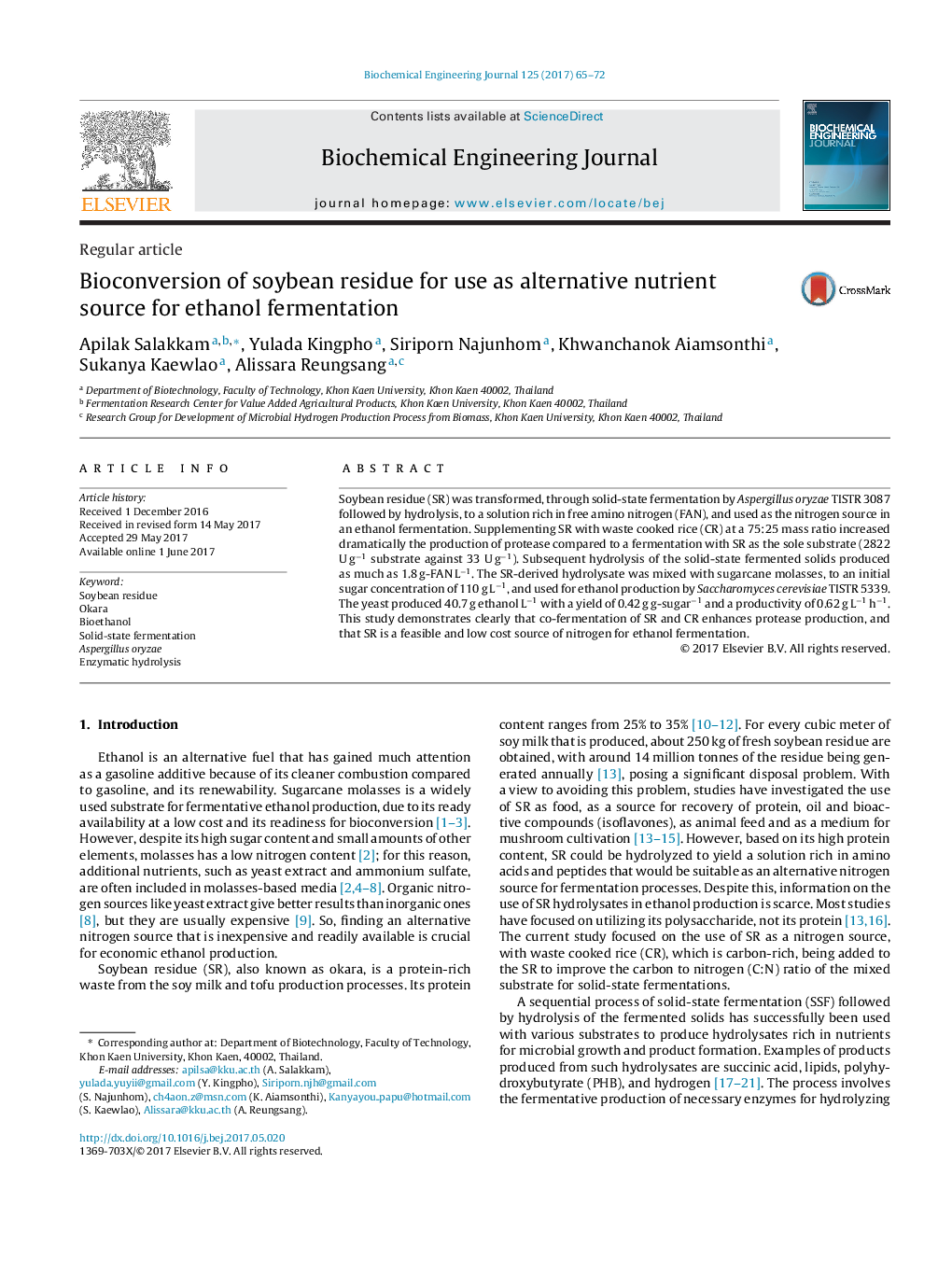| کد مقاله | کد نشریه | سال انتشار | مقاله انگلیسی | نسخه تمام متن |
|---|---|---|---|---|
| 4752124 | 1415990 | 2017 | 8 صفحه PDF | دانلود رایگان |
- Soybean residue (SR) and waste cooked rice (CR) were used for ethanol production.
- Supplementing SR with CR enhanced protease production in solid-state fermentation.
- SR hydrolysate provided adequate free amino nitrogen for ethanol fermentation.
- Ethanol production of 40.7 g Lâ1 with a yield of 0.42 g gâ1 was obtained.
- Bioconversion processes and mass balances of SR to ethanol are proposed.
Soybean residue (SR) was transformed, through solid-state fermentation by Aspergillus oryzae TISTR 3087 followed by hydrolysis, to a solution rich in free amino nitrogen (FAN), and used as the nitrogen source in an ethanol fermentation. Supplementing SR with waste cooked rice (CR) at a 75:25 mass ratio increased dramatically the production of protease compared to a fermentation with SR as the sole substrate (2822 U gâ1 substrate against 33 U gâ1). Subsequent hydrolysis of the solid-state fermented solids produced as much as 1.8 g-FAN Lâ1. The SR-derived hydrolysate was mixed with sugarcane molasses, to an initial sugar concentration of 110 g Lâ1, and used for ethanol production by Saccharomyces cerevisiae TISTR 5339. The yeast produced 40.7 g ethanol Lâ1 with a yield of 0.42 g gâsugarâ1 and a productivity of 0.62 g Lâ1 hâ1. This study demonstrates clearly that coâfermentation of SR and CR enhances protease production, and that SR is a feasible and low cost source of nitrogen for ethanol fermentation.
Journal: Biochemical Engineering Journal - Volume 125, 15 September 2017, Pages 65-72
